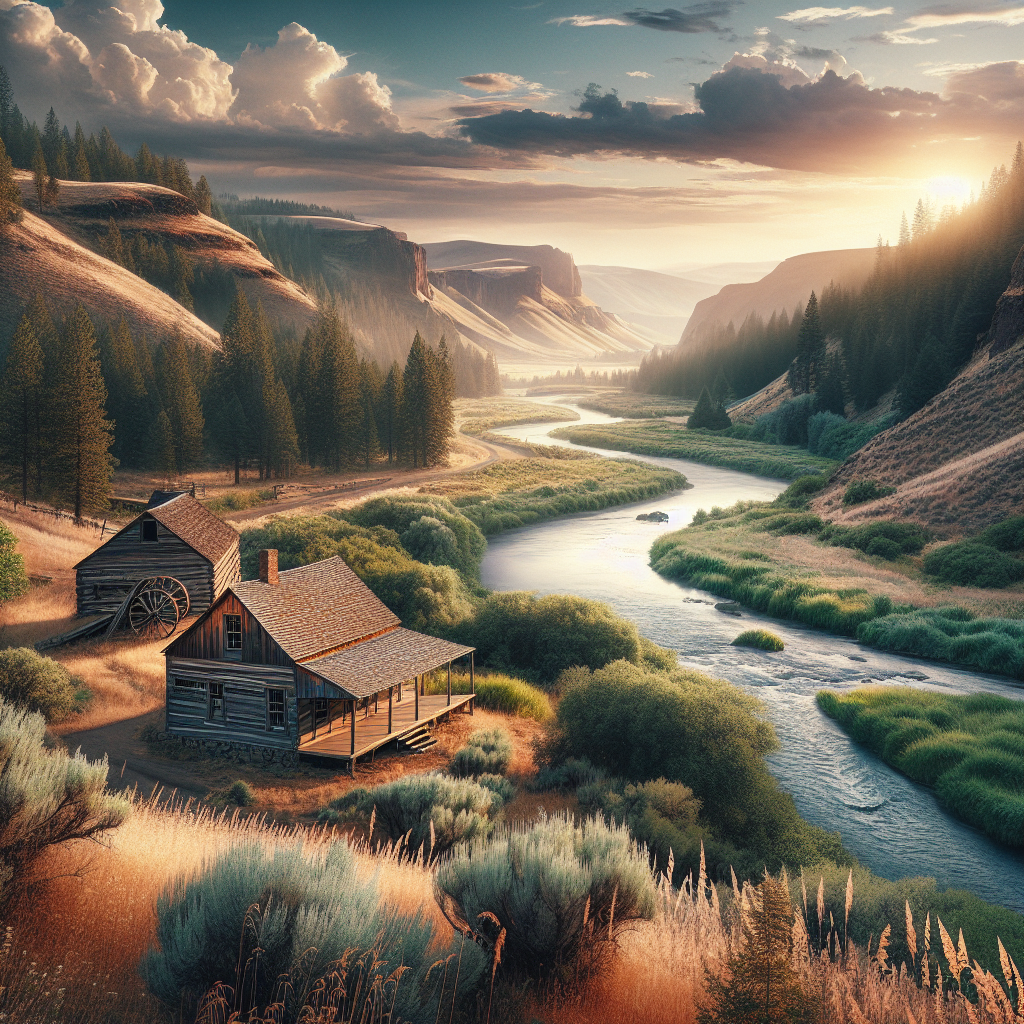Unlocking the Past: Historic Sites of the Oregon Trail You Can Still Visit
The Oregon Trail isn’t just a dusty old page from a grade-school textbook; it’s a living, breathing part of Oregon’s past that is still very much part of its present. Stretching over 2,000 miles from Missouri to Oregon, this intrepid path witnessed thousands of pioneers during the 19th century, craving a fresh start in the fertile lands of the West. Even today, one can still wander amid these historic sites, each one telling its own tale of hardship, determination, and resilience. So, grab a sturdy pair of boots and sense of adventure; let’s journey back in time and experience these stirring remnants of the Oregon Trail.
Fort Vancouver National Historic Site
When pioneers began their treacherous journey across the rugged wilderness, Fort Vancouver was there to welcome weary travelers with open arms. Today, it stands both as a testament to the brave souls and as a gateway to understanding the profound impact the Oregon Trail had on America’s westward expansion. While exploring the grounds, take a peek inside the blacksmith’s shop where these frontier folk would have forged their wagon wheels.
Nathaniel J. Wyeth’s Fort Hall Replica
The original Fort Hall was not just a pivotal supply point along the trail, but also a pivotal part of Oregon’s history. While the original is no longer standing, the modern 1960s replica sitting in Pocatello, Idaho is worth a visit. This fort has meticulously recreated interiors that transport visitors back into an era of frontier living, providing a fascinating window into history.

The Whitman Mission National Historic Site
Near Walla Walla, Washington, lies the historical trail marker of Whitman Mission. A tragic site of confrontation between Native Americans and early settlers, it remains a poignant reminder of the human cost of expansion, underscoring the importance of acknowledging all perspectives of history. Do pay a visit in summer, when wildflowers bloom around the monument, creating a profoundly peaceful environment.
Barlow Road
The fear of traversing the dangerous Columbia River led Sam Barlow and Joel Palmer to blaze a new trail over the rugged Cascade Range in 1845, later known as Barlow Road. Though it was dicey, it was statistically safer than the river route. Part of it is paved now and another part is a dirt road off Mount Hood, challenging to drive but brimming with unadulterated scenic beauty.
The End of the Oregon Trail Interpretive Center
In Oregon City, where the Oregon Trail officially ends, you’ll find the End of the Oregon Trail Interpretive Center. Through a rich amalgamation of exhibits, events, and films, it brings to life the experiences of the pioneers. Don’t miss during late spring and summer, when Oregon City hosts vibrant pioneer craft demonstrations.
Oregon Trail Ruts & Guernsey Ruts
In Guernsey, Wyoming, the trail was carved into the solid rock by countless pioneer wagons. Known as the Oregon Trail Ruts, this part is particularly evocative. It’s a deeply moving experience, reminding us of the sheer tenacity and determination of our forebears.
A Word (or Two) of Caution
While the lure of unspoiled nature can be too tempting to resist, remember these gems are best preserved for posterity when there’s adherence to the general principle of leaving no trace. Also, while autumn colors can be gorgeous, snow at higher elevities could make some of the trail sites less accessible. It’s always a good idea to check the respective websites for seasonal updates and entrance fee information.
Embracing the Adventure
In conclusion, the Oregon Trail is a vivid tapestry of yesteryears, comprising pivotal moments that helped shape the landscape of Oregon and indeed, America. Embrace these tangible links to history, revel in the intriguing stories they have to tell, and tread lightly on the hallowed grounds that the brave pioneers once roamed.
By walking these paths, where echoes of the past seem to resonate in the wind, you become part of the living history. These sites aren’t about gazing back into a distant past, but understanding the present through the lens of yesteryears. After all, isn’t that what history is all about? So head out with a spirit of curiosity and reverence. Because while global travel is a thrill, sometimes the most extraordinary journeys are those we make through time, right at home. Welcome, friend, to the great journey that is the Oregon Trail.
